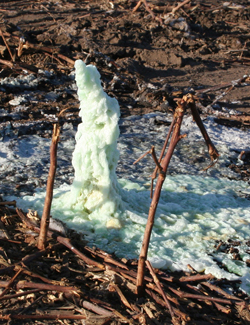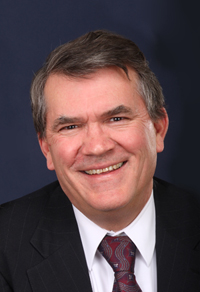|
Poly-Phosphate
Trials
USDA-ARS,
Nutrient Management Toolbar, scientific evaluation of all nutrient types.
The
enclosed article arrived today after six years of research….Rich Koenig
completed a good study at WSU.
Six years of testing proves.....that liquid phosphate as ammonium poly
phosphate....10-37-0 is much more effective than Dry, 11-52-0.
This sends a powerful message to our Montana, ND, SD and Canadian
producers that have been using dry 11-52-0....the so called bottom of the
barrel dry phosphate.
 Exactrix has proven that TAPPS....Triple Super Ammoniated Poly Phosphate
is at least twice as effective as Dry P. Thus APP is 200% more crop
effective as TAPPS. Exactrix has proven that TAPPS....Triple Super Ammoniated Poly Phosphate
is at least twice as effective as Dry P. Thus APP is 200% more crop
effective as TAPPS.
This announcement from the Fluid Fertilizer Foundation confirms that when
10-37-0 is dual placed with liquid N the placed phosphate is much more
effective as a liquid phosphate than as a dry phosphate material.
Evaluated over six years at Lind and Ralston, Washington....... WSU
scientists and educators....Rich Koenig and Aaron Esser confirm that use
of Fluid P or APP, Ammonium Poly Phosphate....10-34-0 and or
11-37-0...produces much better responses than dry 11-52-0.
Winter wheat was seeded at 40 pounds per acre on 12 inch centers….about 2
weeks after the dual placed bands had been applied the winter wheat was
seeded. The 12 inch rainfall area was a traditional crop tillage summer
fallow rotation.
Thus when the margin gets close….if the crop
production margin needs to be improved….you will find Ammonium Poly
Phosphate is being used and it is most effective when triple super
ammoniated. Go to
www.exactrix.com for information about TAPPS.
Summary. Koenig and Esser….Dryland wheat responds to liquid P.
Quadratic responses to fluid phosphorous (11-37-0) were observed four out
of six years.
High rates of fluid P reduced dry matter and grain yield, possibly due to
P stimulation of the vegetative growth and subsequent depletion of stored
soil moisture.
Grain yields with dry P (11-52-0) were similar to or lower than fluid P in
the low rainfall, crop-fallow areas of eastern Washington.
Intermediate rates of fluid P (10-34-0, 11-37-0) should be applied to
optimize plant growth and prevent yield reductions.
Similar studies from Australia also confirm that liquid streaming flow of
10-34-0 and 11-37-0 are superior over dry phosphate fertilizer materials
in calcareous soils.
Since No-till soils are generally cooler than black fallow soils even
greater responses to placed 10-34-0 and TAPPS can be anticipated in spring
cropping systems.
The use of 11-52-0 was discontinued in Yielder Drill testing in 1983 when
discoveries of fluid 10-34-0, fluid 12-0-0-26S, liquid Zn and 16-20-0-14S
proved to be superior fertilizer products in both proteins and yields when
super ammoniated.
Note…10-34-0 and 11-37-0 are built in the same TVA or Shell reactor with
10-34-0 having a lower freezing or salt out temperature….11-37-0 tends to
used in warmer climates.
At the time of manufacture
10-34-0 11.65 pounds per gallon, Salt out 0 degrees F, 3.96 pounds P per
gallon. 65% to 75% Poly Phosphate.
11-37-0, 11.9 pounds per gallon, Salt out 32 degrees F. 4.40 pounds P per
gallon. 65% to 75% Poly Phosphate.
Actual values may be different for each manufacturer based on storage and
temperature stability programs….but seldom less than 3.87 pounds P per
gallon as 10-34-0.
The manufacturer must always favor the customer by weight and value.
Poly Phosphate is an ideal fluid carrier to homogenously deliver liquid
micro-nutrients such as AZn.

Guy Swanson
ASABE, ACS, ASA, FFF, WSDA certified.
Exactrix®, Spokane, WA |

